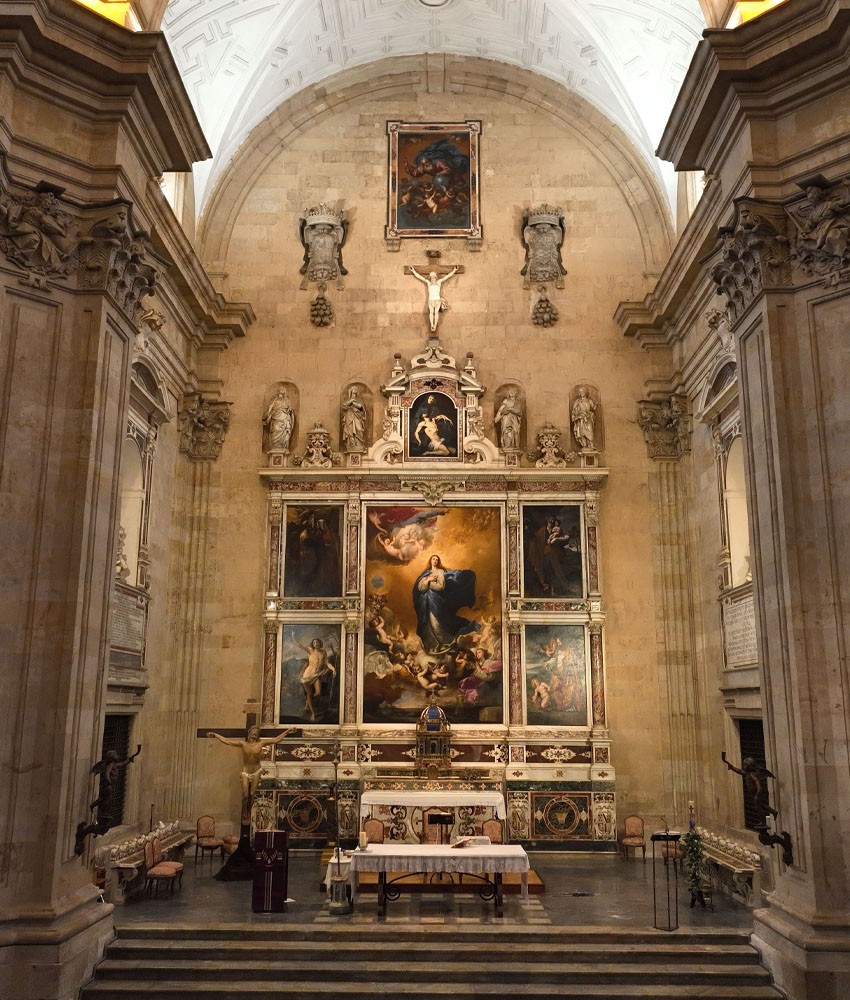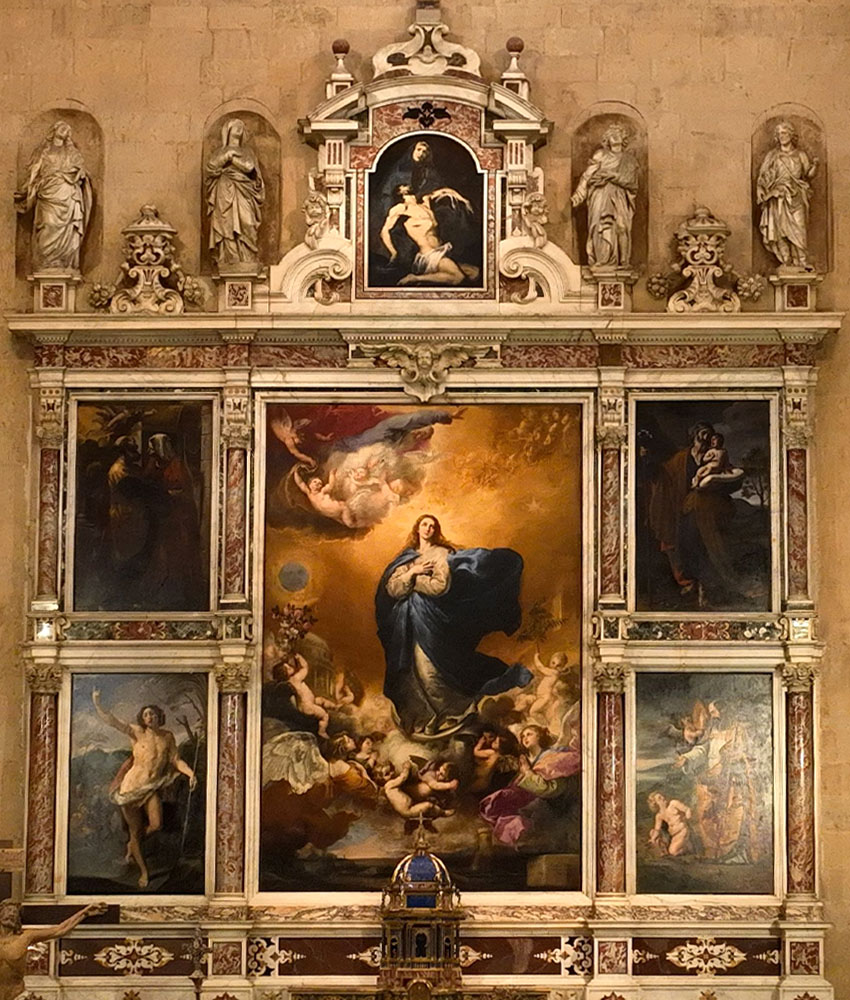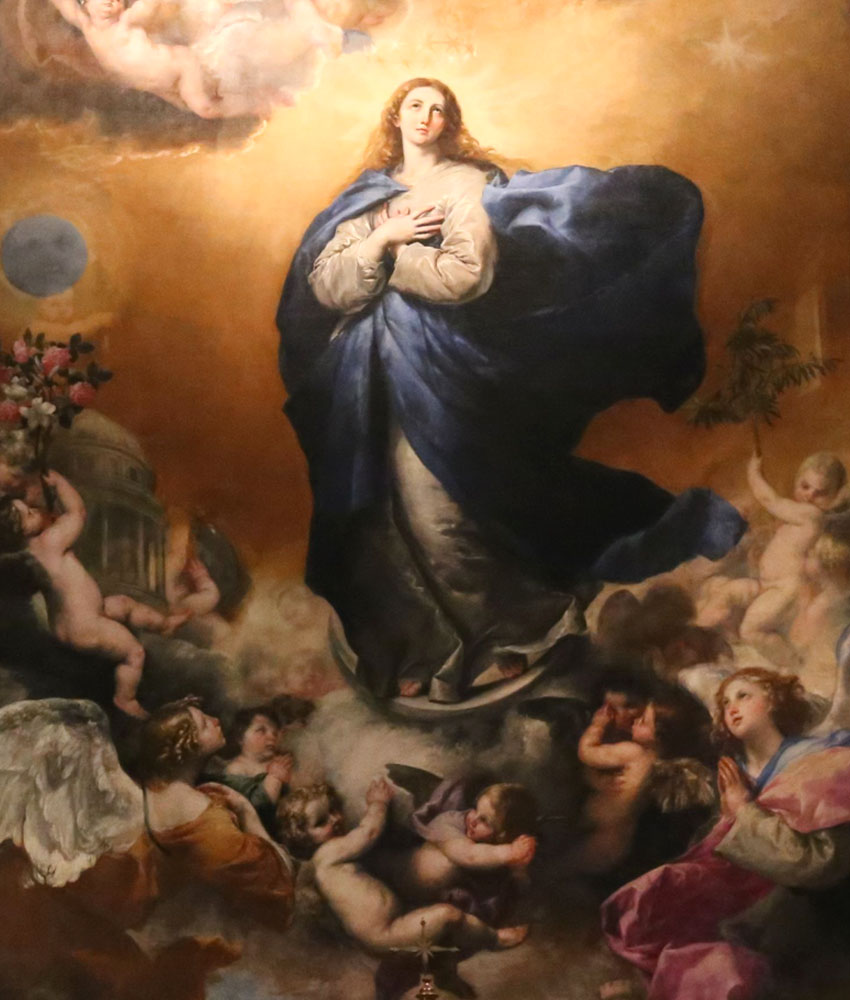Church of La Purísima
In the heart of Salamanca, a city declared a World Heritage Site for its historical and cultural richness, stands a masterpiece of Baroque art: the altarpiece of the Church of La Purísima. This magnificent structure not only represents an architectural milestone but also a living testimony of fervent spirituality. Its altarpiece, the work of Cosimo Fanzago, constitutes a central piece that captures the essence of Italian Baroque on the Iberian Peninsula. In fact, all its elements were brought from Naples.
The convent of Las Agustinas and the church of La Purísima form a cloistered convent complex located in the historic center of Salamanca. It was declared a National Monument by Decree on April 15, 1935. The Church of La Purísima has a severe and imposing facade, a letter of introduction that anticipates the beauty and splendor that await inside. Each stone seems to tell a story, each architectural detail speaks of a past where devotion and art were masterfully intertwined.
The Monterrey family placed special emphasis on the construction of the church, taking advantage of their Neapolitan experience. Therefore, they commissioned the sculptor Cosimo Fanzago to create an altarpiece made of marble. The artist, originally from Clusone, Italy, and mainly active in Naples, brought with him the grandeur of Italian Baroque that is sublimely materialized in this work. Fanzago achieves a perfect symbiosis between sculpture, painting, and architecture.
As a curiosity, at the death of the Counts of Monterrey – he died in 1653 and his wife a year later – the altarpiece had not yet been placed. In fact, it wouldn’t be for a long time after, as it wasn’t until 1679 that the entire ensemble was completed and, later, in 1687 that the temple was consecrated and opened to the public.
As the great protagonist is the monumental Immaculate Conception that José de Ribera had painted for the Monterrey family in 1635. On its sides are four other paintings: Saint Joseph, Saint Joachim and Saint Anne, probably by Cavedone (upper left and right sides of the ensemble); Saint John the Baptist, by Guido Reni (lower left side); and Saint Augustine (lower right side), considered to be of the Flemish school.
At the top of the altarpiece is The Pietà, also by José de Ribera. A living painting that gives us the vision of a unique jewel in our painting. A pinacotheca that brings together icons of reference artists and sublimely transmits the harmony of color, texture, and light that surrounds it.
Fanzago’s altarpiece is an invitation to contemplate, to get lost in details that, layer after layer, unveil a celestial narrative. Each element of the altarpiece and every corner of the church is imbued with a theological and moral message that sought to guide the believer towards a life of piety and devotion.
Today, the Church of La Purísima not only remains as a heritage monument of incalculable value but also as a source of inspiration and contemplation for visitors from all over the world. Its ability to connect with the faithful and art admirers has not diminished; on the contrary, it has transcended generations, standing as a lasting testimony to human genius and spiritual transcendence. Visiting the Church of La Purísima is, more than a tour of a physical space, a pilgrimage through history, art, and faith.

HOURS
Summer Hours: Monday to Friday: 5:00 pm to 8:00 pm | Saturday: 11:00 am to 1:30 pm and 5:00 pm to 8:00 pm
ACCESS
Free access
LOCATION
Plaza de las Agustinas, 37002
PLAN DE SOSTENIBILIDAD TURÍSTICA DE SALAMANCA











